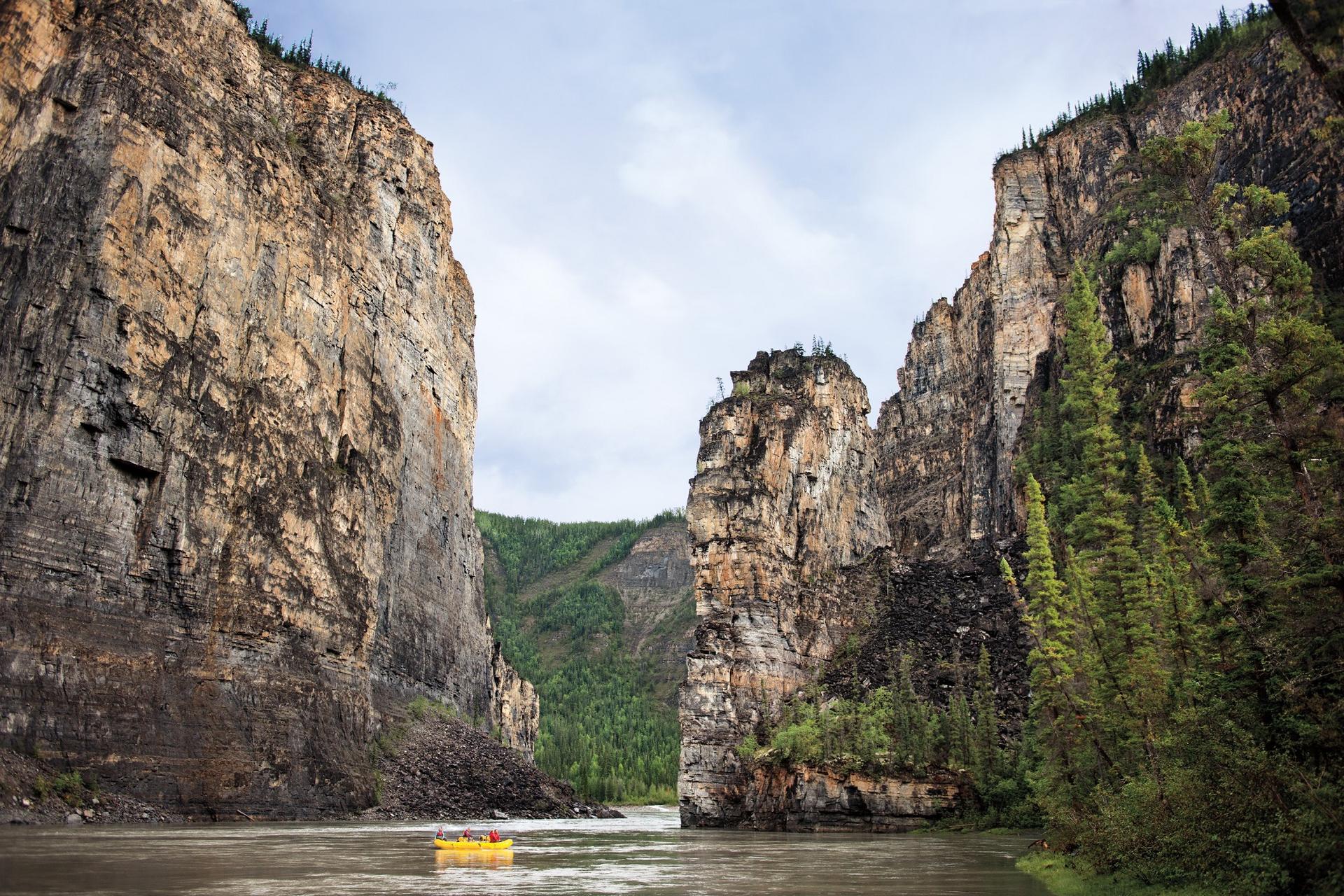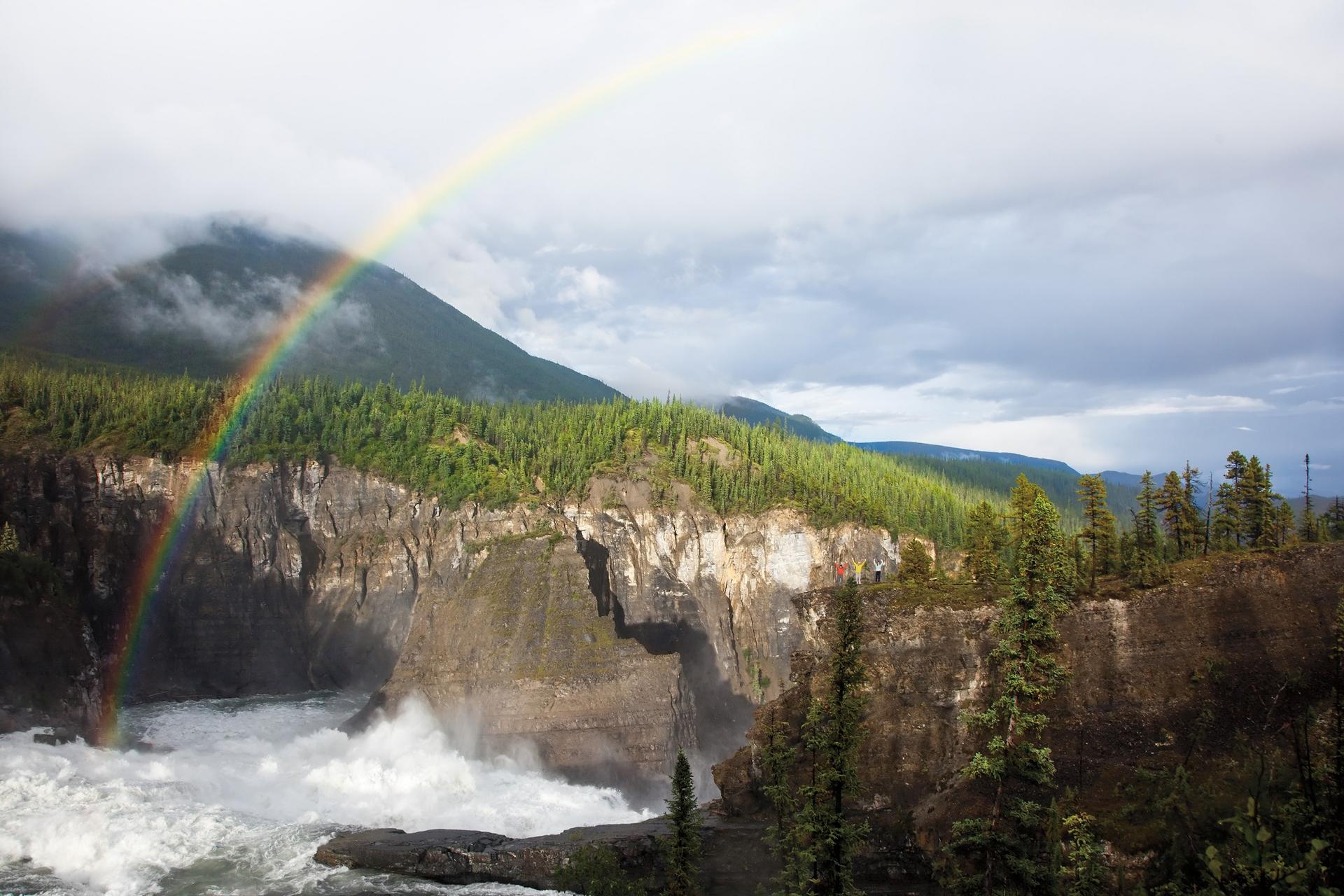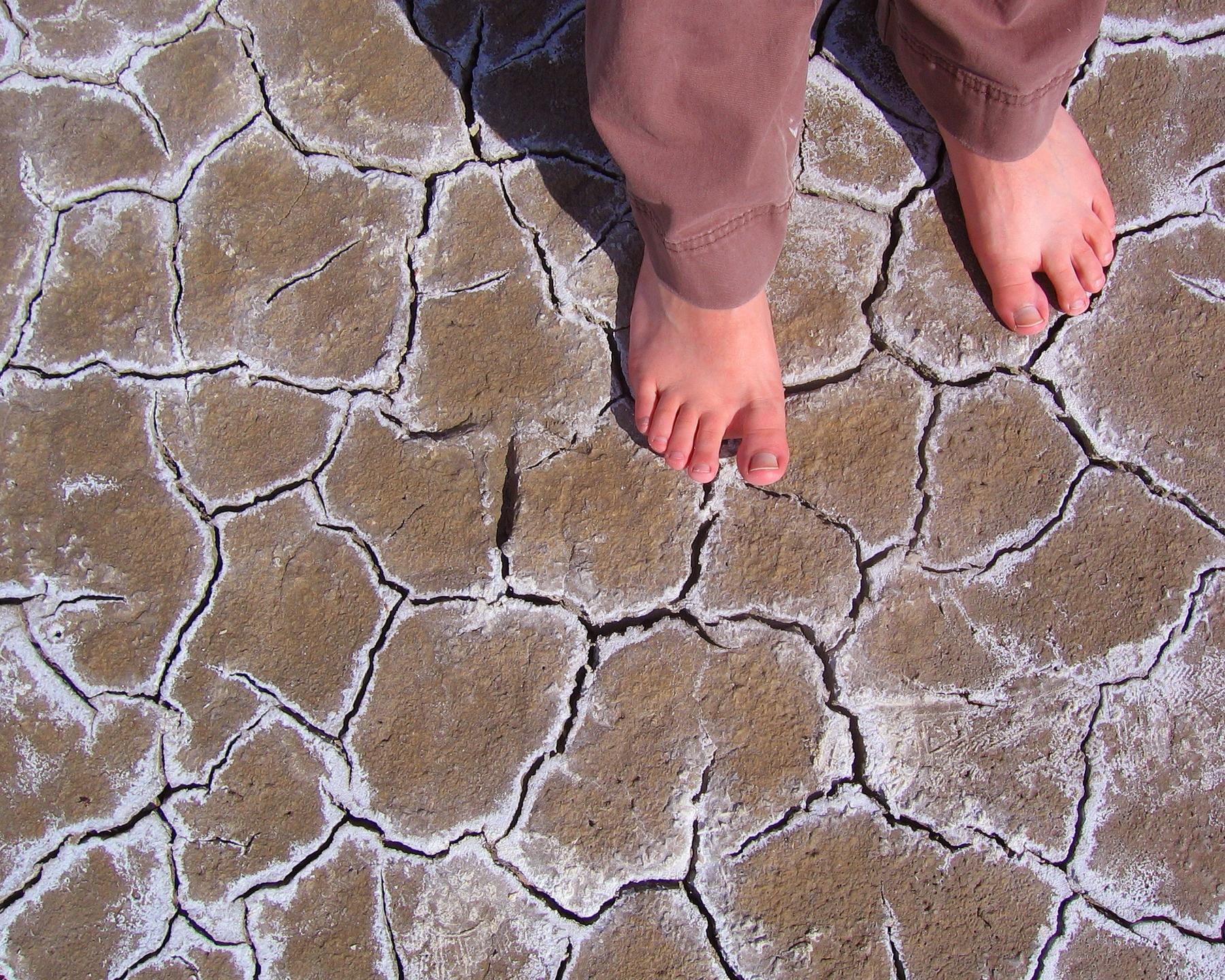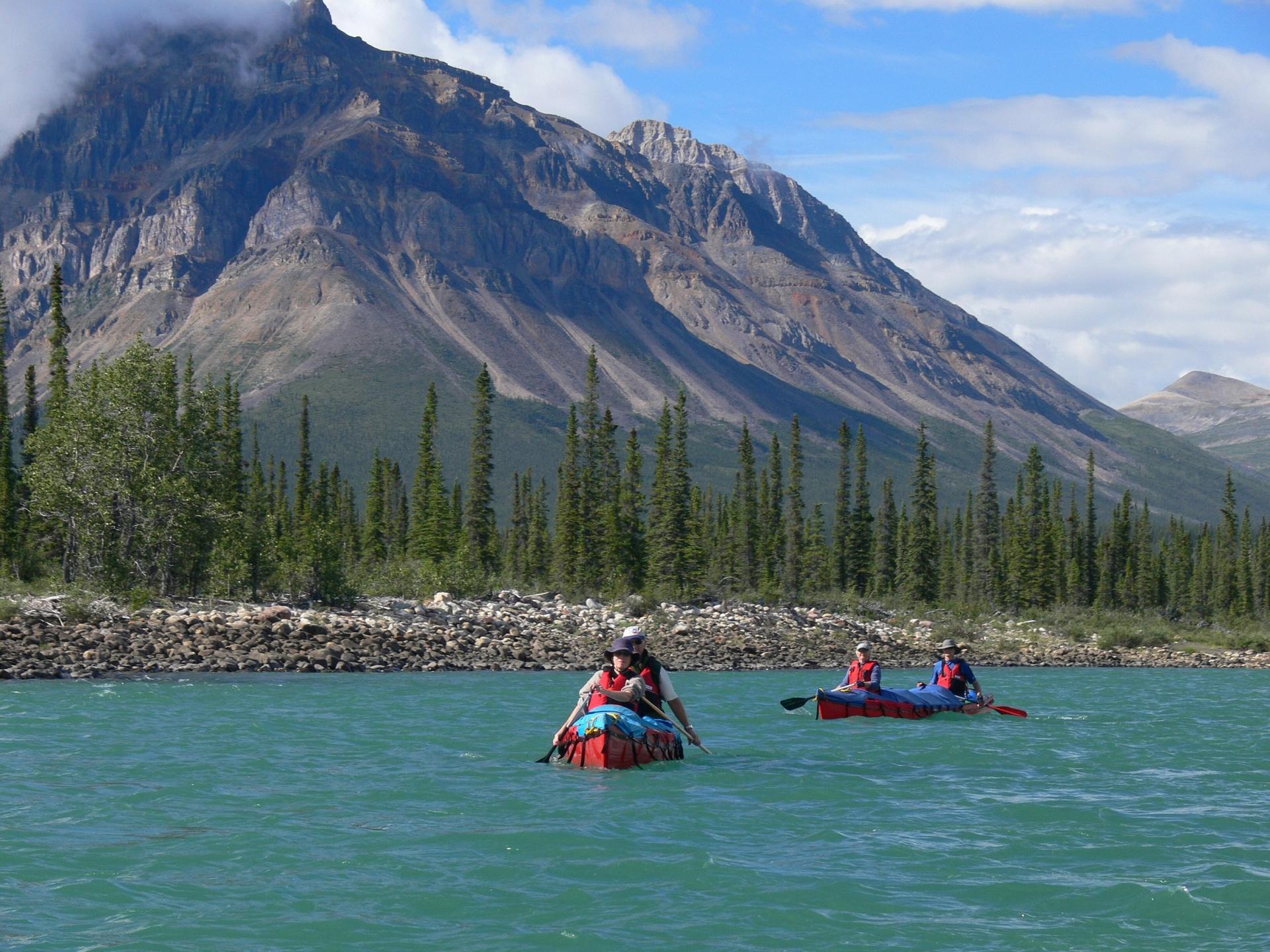The top 10 attractions in the Northwest Territories

The best that the Northwest Territories has to offer takes you into the wild, out of your comfort zone, and around the local community.

Northern Lights
We don't need to introduce you to the Northern Lights. Most people have heard of this natural phenomenon, which sees the bright reds, blues, greens, and yellows dance and shift across the night sky. This is a top 10 bucket list item we're talking about. What you might not know is that the Northwest Territories provides some of the best (if not THE best) aurora borealis viewing in the world. In both autumn and winter, when the sky is clear, you can wrap up, sit back, look up, and enjoy one of the greatest shows on earth. Rent out a lodge, cabin or teepee in the wilderness so you can enjoy the lights in style. Ski, dog sled or snowmobile to a particularly clear spot and make an activity out of it. Or look through your hotel window and marvel at Mother Nature. This isn't an attraction in the traditional sense, but you can't really talk about the Northwest Territories without talking about the Northern Lights.
Great Slave Lake
Great Slave Lake, which borders the provincial capital Yellowknife, is the deepest lake in North America (613m) and the tenth biggest lake in the world. So how do you experience something so huge? How about by plane? Floatplanes fly in and out of the lake, and offer breathtaking views of the region. Or maybe by boat? Rent a kayak and paddle the shoreline, or opt for a larger boat and go fishing for lake trout and pike. Maybe you'd prefer to snowmobile? There's ice on Great Slave Lake for eight months of the year, and during much of that time you can cross the water via snowmobile. Pick a spot, park out, and look up for a chance at seeing the Northern Lights.

Nahanni National Park Reserve
If you want to really experience the northern wilderness, the Nahanni National Park Reserve is a welcoming sight--especially for paddlers. The rushing whitewater Nahanni River flows through the reserve, passing through four large canyons which can reach close to 1220m in depth. At one point, the river plunges 90m off a cliff forming the Virginia Falls, which are twice the height of their Niagara counterpart. Sulphur hot springs, mountain ranges, tundra, and forests can all be found within the boundaries of Nahanni. The reserve is remote, but visitors can camp throughout the summer months. Join a guide and ride the rapids for incomparable views and a serious adrenaline rush. Hiking and mountain climbing provides another perspective on the park, and may bring you in sight of Dall's sheep, woodland caribou, wolves and black bears. It's no wonder National Geographic named the park one of the best trips of 2014.
Ice Roads
You might have seen the History Channel show "Ice Road Truckers." The show was originally filmed on the ice roads of the Northwest Territories, home to the world's longest ice road. But why watch when you can do it yourself? You can drive and experience these roads during the winter months, with the help of local tours. The ice roads, built on top of packed snow and a metre of ice, add 870 miles to the territory's highways in the winter, connecting them to mines and more remote communities. The conditions can be dangerous, but a number of experienced tour operators will take visitors out onto the ice roads for a drive they'll remember. Heck, you can even ride the ice in a limousine! That's a story you can tell everyone back at home.

Wood Buffalo National Park
Have you ever visited a national park that's bigger than Switzerland? Wood Buffalo National Park is actually Canada's largest national park, at over 17,300 square miles. It's also home to the world's largest beaver dam, one of the world's largest herds of free roaming bison, and is the last remaining natural nesting area for the endangered whooping crane. Beyond the incomparable wildlife watching, the massive park is great for exploring on foot or via canoe. You can spend a few weeks camping in the park and not even scratch its surface. Make sure you stop by the curious Salt Plains, the dried remains of a 380 million-year-old seabed where salt-like minerals are pushed to the surface from below--almost like stalagmites above ground.
Canol Trail
Do you like to push yourself to the limit? Test your gumption out in the wild? The Canol Trail is probably your kind of attraction. A remnant of the Second World War, the trail was initially created as a road and pipeline route between Norman Wells in the Northwest Territories and the Yukon. After being used for a year, it became too difficult to maintain, and rusting trucks, overground stations and other 'signs of man' still dot the route. The Canol Trail is no joke. It's 222 miles of unkempt paths, river beds, mountain tracks, glacier-carved canyons, and other surprises, and is known as one of the most difficult trails in Canada. It will take the average hiker over three weeks, in remote wilderness void of civilization, to do the entire Canol Trail, though most only do part of it. Some have tackled the trail a little faster on mountain bikes, ATVs, snowmobiles, and dogsleds. For the rest of us, many tour companies offer aerial tours of this fascinating historical route.
Dempster Highway
The 450-mile Dempster Highway was built for people who really love to drive. Hop in your ride and roll from Dawson City, through the rugged mountain peaks of the Tombstone Range, across the Arctic Circle and into the Mackenzie River Delta, before parking in Inuvik. Along the way you can camp, fish, canoe, and generally enjoy the scenery of remote wilderness. The road, named for an RCMP inspector who would cross the route in a dogsled, is now most often driven in summer, where nearly 24 hours of sun can make for long, enjoyable driving days. Take on the top of the world from behind your steering wheel.
Great Northern Arts Festival
During 56 summer days, the Northwest Territories experience 24 hours of daylight. Rather than worry about how it might affect their sleep, locals jump at the opportunity to celebrate this unique setting. For more than a quarter of a century, the Great Northern Arts Festival has showcased the works of 120 Northern painters, sculptors, musicians and First Nations artists from across the country, all under the Midnight Sun. Watch a Gwich'in woman create handmade Aboriginal dolls and see a polar bear gradually emerge from a soapstone in the hands of a native carver. Dance to Inuit hip-hop. Then dine surf-and-turf Arctic-style on char and caribou before kicking up your heels to Northern rock, throat singing and traditional drumming in your brand new mukluk shoes.

Keele River
Paddlers from across the world regularly turn to the Keele River for their next adventure. The 215-mile long river passes through alpine tundra, alpine plateaus and the Mackenzie Mountains, offering incredible surroundings for the canoers and rafters who move along the waterway. Of course, they also have to keep their eyes on the water, as swift currents, swirling eddies, and fast-moving rapids make for challenging but exciting travel. Grab a floatplane, fly into the headwaters, stretch your shoulders, and grab a seat in the boat. For those who like a calmer experience, the Keele also provides great fishing and wildlife viewing opportunities. The moose and beavers you might encounter have been hunted by the Dene Peoples along the Keele for 12,000 years.
Acho Dene Native Crafts
The Deh Gah Gotie Dene (people who live by the river) have always inhabited the Northwest Territories. The history and culture of these First Peoples are carried on with the help of crafts, and it is from this tradition that Acho Dene Native Crafts was born. More than 40 cottage producers living in the community use ancestral techniques to make fur clothing, birch bark baskets, jewellery, moccasins, mukluks, and more. The store is a must-stop for those looking for a souvenir that tells a real story about the Northwest Territories.